Browse Exhibits (6 total)
Patterns of Life
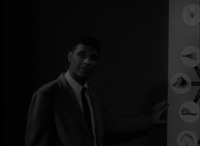
13 episodes, 1960, University of Southern California
From WNET:
"'Patterns of life' has as its theme an explanation of the chemical bases of life, which remain constant whatever form the life itself may take. In its most simple and its most complicated forms, living matter is always based upon the same elementary chemical and physical reactions, explains Dr. Saltman: it is the purpose of this series to describe those reactions, how that are produced, and what substances go into the construction of cells and enzymes, vitamins and viruses – the elements of life. Using visual aids such as scale models, diagrams, and even rare views through electronic microscope, Dr. Saltman analyzes in layman’s terms the complicated and fascinating chemical systems which weave together into the “Patterns of Life.” The series was produced for NET by the Department of Cinema of the University of Southern California. The series consists solely of lectures and demonstrations by Dr. Saltman."
Discovery
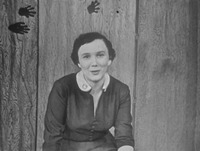
39 episodes, 1957, WGBH (Boston)
From WNET:
"'Discovery' produced by WGBH-TV aims to make learning about the world in which we live an adventure for young people -- an advantage that opens the doors to many fields of scientific knowledge. Living animals and plants and other visuals become the illustrations for what the producers of “Discovery” call “how learning” -- how something causes something else, how change in one situation is related to another, how animals are adapted to live in their specific environments, and how plants, animals and man are related to one another. Airing not only to stimulate intellectual curiosity about the world around us, but hoping also to encourage creative activity on the part of young viewers, emphasis is placed on what the child can do at home. Guest on the programs include scientific experts as well as boys and girls with science hobbies. The presentations are straightforward and the demonstrations interesting and unusual enough to command the attention of upper elementary grade students, junior high, and even high school biology classes.
Featured Personality: Mary Lela Grimes
The producer, writer and narrator of the “Discovery” series is a young woman from North Carolina: Mary Lela Grimes. All of her life she has had nature hobbies such as collecting butterflies, keeping wild pets, naming plants, studying minerals, and watching birds. After her graduation as a Phi Beta Kappa from the University of North Carolina, she became director of the Durham Children’s Museum and wrote a daily column on nature for the Durham Herald Sun. When she and her husband moved to Boston, she joined the staff of the Massachusetts Audubon Society, working in the elementary science teaching program. She also did newspaper, radio and TV work for the Society and helped organize and direct the Society’s Wildwood Nature Camp at Camp Barre, North Carolina. In 1954, Mrs. Grimes was awarded a fellowship to study communications by the National Wildlife Federation. she spent a year at Boston University (where she received her MS) and there began working with WGBH-TV in planning science programs for children. It was here that the idea of “Discovery” was born."
Discovery at the Brookfield Zoo
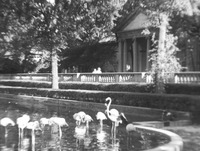
13 episodes, 1959, WTTW (Chicago)
From WNET:
"Mary Lela Grimes returns with program which are essentially a continuation of the original “Discovery” series. Moved to a new locale, Chicago’s Brookfield Zoo, the series will introduce its viewers to the strange and wonderful inhabitants of a zoo. Through visits to various cages, viewers learn about the families who live in them."
Heredity
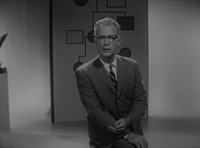
9 programs, 1960, KUHT (Houston)
From WNET:
"The nine half-hour programs which make up this series are designed to teach the layman about the biological facts of inherited characteristics – heredity. The programs, which include chemical demonstrations, diagrams, and film clips, as well as living plants, animals and men and women illustrating various topics, consist of lectures by Dr. H. Burr Roney, who explains such questions as reproduction and heredity, sexuality and variation, the roles of genes and chromosomes, heredity and environment, and some fallacies about heredity."
The nature of life
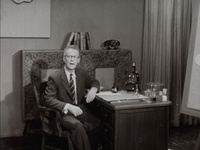
12 episodes, 1956, KUHT (University of Houston)
From WNET:
"This series was designed to teach a highly technical scientific subject via television. Dr. H. Burr Roney, associate professor of biology at the University of Houston, gives the first portion of his basic biology course, changed only slightly for the television audience. An excellent television performer, Dr. Roney has made an effort to clarify the material through the use of carefully prepared visual aids."
Virus

8 episodes, 1960, KQED (San Francisco)
From WNET:
"From KQED in San Francisco and the Virus Laboratory of the University of California, Berkeley, comes a distinguished series of eight half-hour programs on the nature of the virus. Prepared using a National Science Foundation grant, the series is designed to explain to the viewer some of the basic facts about viruses, those structures so essential to life and health, facts which for the most part have only been discovered in the past twenty-five years. Drawing on advanced scientific techniques such as microcinematography, electron microscopy and freeze drying, as well as on animation, large-scale models and drawings, the programs combine lectures with demonstrations to give the viewer an extremely vivid picture of this complicated topic. Particularly emphasized are facts about the virus' relation to bacterial disease, to polio, and to cancer, and new information about viruses which may not yet be generally known to students of biology or to the non-scientific public."

